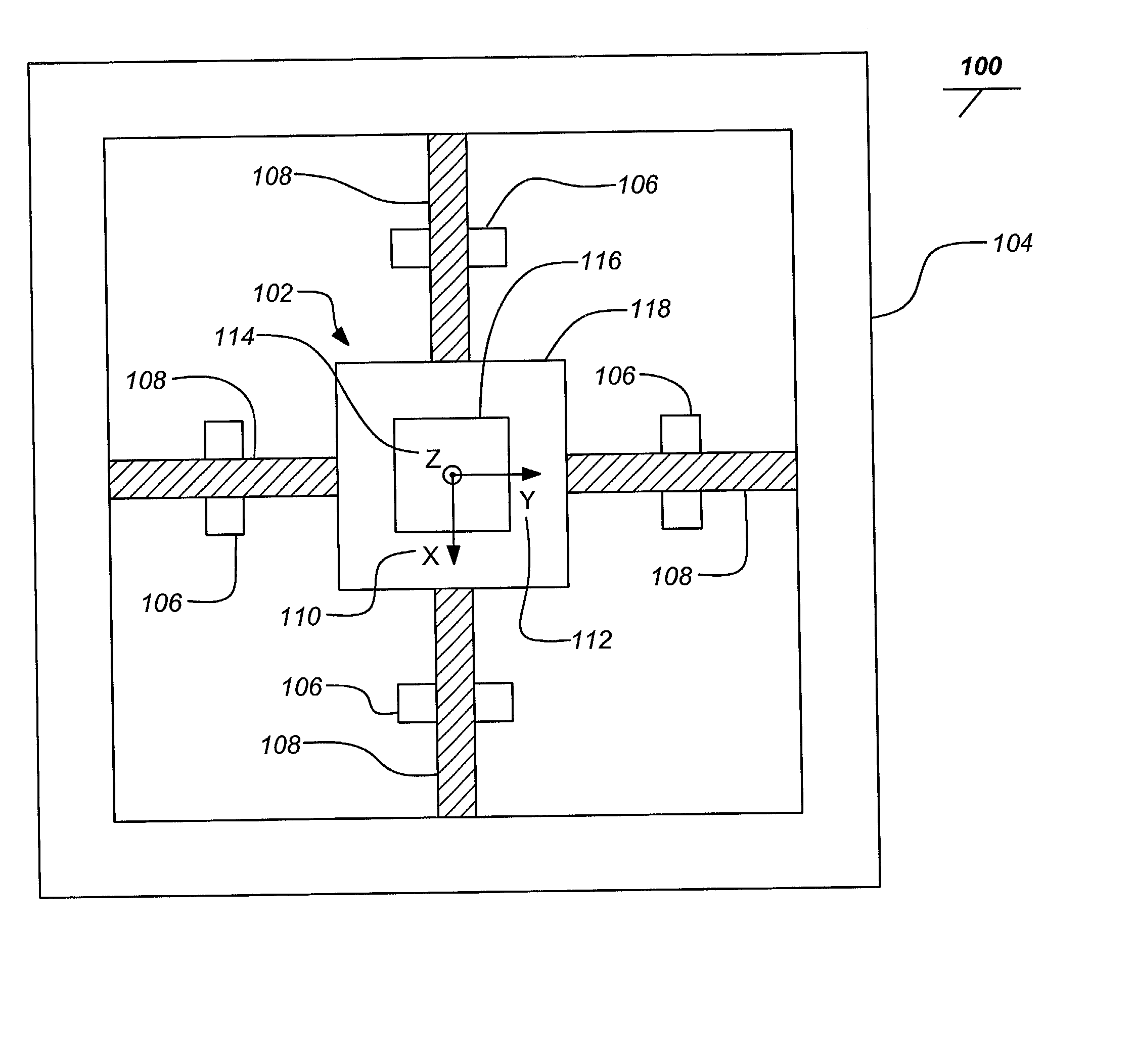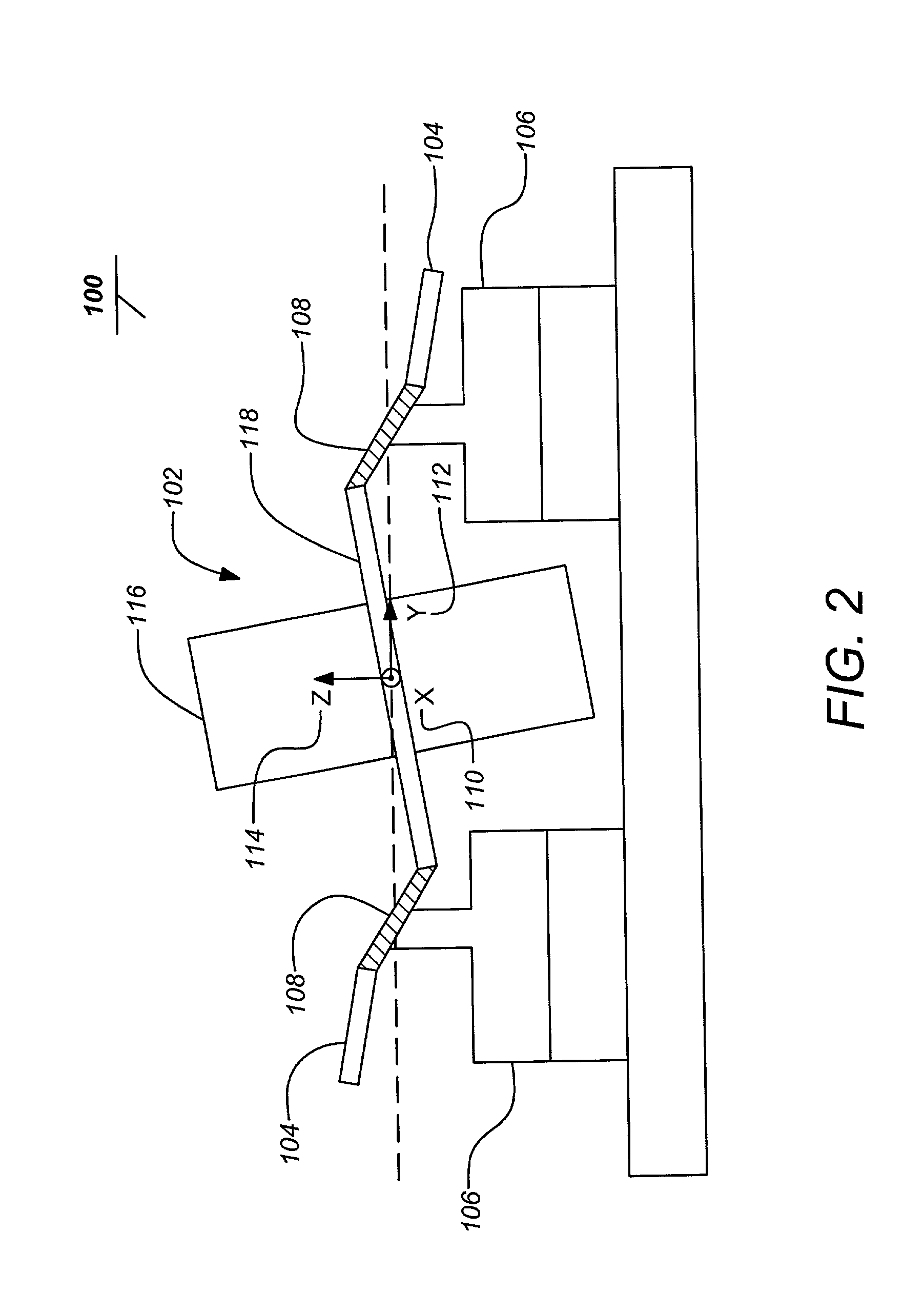Isolated resonator gyroscope
a gyroscope and resonator technology, applied in the field of gyroscopes, can solve the problems of large and heavy, large and heavy, and the mechanism of older conventional gyroscopes is very heavy, and achieves the effects of improving the accuracy of gyroscopes
- Summary
- Abstract
- Description
- Claims
- Application Information
AI Technical Summary
Benefits of technology
Problems solved by technology
Method used
Image
Examples
Embodiment Construction
[0019] In the following description, reference is made to the accompanying drawings which form a part hereof, and which is shown, by way of illustration, several embodiments of the present invention. It is understood that other embodiments may be utilized and structural changes may be made without departing from the scope of the present invention.
[0020] 1.0 Overview
[0021] The key principle of the present invention is to provide a resonator comprising two bodies with transverse intertia symmetry about an axis aligned with an input axis and elastically supported so that their axes of symmetry and centers of mass coincide and together form two differential rocking modes of vibration transverse to the axis of symmetry. The two bodies are supported in a case having an inertial rate input axis and exhibit substantially equal frequencies distinct from other modes of vibration, mutually orthogonal and imparting substantially zero net momentum to the case. There is further an internal actuat...
PUM
| Property | Measurement | Unit |
|---|---|---|
| Mass | aaaaa | aaaaa |
| Flexibility | aaaaa | aaaaa |
| Inertia | aaaaa | aaaaa |
Abstract
Description
Claims
Application Information
 Login to View More
Login to View More - R&D
- Intellectual Property
- Life Sciences
- Materials
- Tech Scout
- Unparalleled Data Quality
- Higher Quality Content
- 60% Fewer Hallucinations
Browse by: Latest US Patents, China's latest patents, Technical Efficacy Thesaurus, Application Domain, Technology Topic, Popular Technical Reports.
© 2025 PatSnap. All rights reserved.Legal|Privacy policy|Modern Slavery Act Transparency Statement|Sitemap|About US| Contact US: help@patsnap.com



